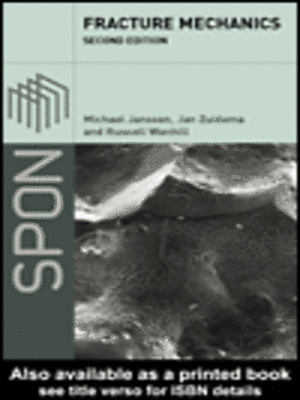
Sign up to save your library
With an OverDrive account, you can save your favorite libraries for at-a-glance information about availability. Find out more about OverDrive accounts.
Find this title in Libby, the library reading app by OverDrive.



Search for a digital library with this title
Title found at these libraries:
| Library Name | Distance |
|---|---|
| Loading... |
In this second edition, which is the result of numerous revisions, updates and additions, the authors cover the basic concepts of fracture mechanics for both the linear elastic and elastic-plastic regimes. The fracture mechanics parameters K, G, J and CTOD are treated in a basic manner along with the text methods to determine critical values. The development of failure assessment based on elastic-plastic fracture mechanics is reflected in a comprehensive treatment.
Three chapters are devoted to the fracture mechanics characterisation of crack growth. Fatigue crack growth is extensively treated and attention is paid to the important topic of the initiation and growth of short fatigue cracks. Furthermore, sustained load fracture and dynamic crack growth are discussed, including various test techniques, e.g. the determination of the crack arrest toughness.
Finally, there are two chapters dealing with mechanisms of fracture and the ways in which actual material behaviour influences the fracture mechanics characterisation of crack growth.
This textbook is intended primarily for engineering students. It will be useful to practising engineers as well, since it provides the background to several test and design methods and to criteria for material selection.
Three chapters are devoted to the fracture mechanics characterisation of crack growth. Fatigue crack growth is extensively treated and attention is paid to the important topic of the initiation and growth of short fatigue cracks. Furthermore, sustained load fracture and dynamic crack growth are discussed, including various test techniques, e.g. the determination of the crack arrest toughness.
Finally, there are two chapters dealing with mechanisms of fracture and the ways in which actual material behaviour influences the fracture mechanics characterisation of crack growth.
This textbook is intended primarily for engineering students. It will be useful to practising engineers as well, since it provides the background to several test and design methods and to criteria for material selection.







